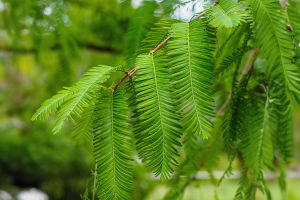Have you ever walked through a field or a grassy area and found small, spiky seeds stuck to your clothes or your pet's fur? If so, you've probably encountered Bidens pilosa, commonly known as the "Beggar's Tick" or "Spanish Needle."
This common plant has a clever and unique method of seed dispersion that almost guarantees its presence in many corners of the world.
Whether you're in a bustling city, a quiet rural area, or even out in nature, the chances are high that you've crossed paths with Bidens pilosa without even realizing it!
In this article, we're going to explore the fascinating features of Bidens pilosa, its unusual seed dispersal method, and why this plant is so widespread across different regions of the world.
What is Bidens pilosa?
Bidens pilosa is a herbaceous plant native to the Americas, but it has since spread to many other parts of the world, including Asia, Africa, and even Europe. It's often seen as a Invasive plant due to its rapid growth and its tendency to take over spaces, but it also has some useful properties, including medicinal uses in various cultures.
The plant gets its name "Beggar's Tick" because its seeds, which are covered in tiny, hook-like barbs, tend to stick to anything they come in contact with, including clothing, animal fur, and even human skin. When the plant matures, it produces small, yellow flowers that later turn into these spiky seed pods.
One of the most interesting things about Bidens pilosa is its adaptability. Whether in tropical regions or temperate climates, this plant thrives almost anywhere, making it one of the most common plants around the world.
The Special Seed Dispersal Mechanism
What makes Bidens pilosa stand out is its incredibly effective and unusual method of seed dispersal. The plant produces seeds that are covered with sharp, curved hooks. These hooks are designed to latch onto anything they come in contact with, especially animals or humans passing by.
The hooks are not just small; they're extremely efficient at clinging to surfaces. As we walk through areas where Bidens pilosa grows, the seeds attach to our clothing or our pets' fur without us noticing. Once these seeds are carried away to a new location, they eventually fall off, often in a new area where the plant can grow and spread further.
This method of dispersal is called "zoocory," where seeds are transported by animals. In this case, humans and animals alike unwittingly become vehicles for the seeds of this plant. It's a fascinating example of how plants can evolve unique methods to ensure their survival and spread across vast distances.
Why is Bidens pilosa So Widespread?
The widespread nature of Bidens pilosa is primarily due to its effective seed dispersal mechanism. But it's not just the hooks that help it spread—Bidens pilosa is also incredibly hardy. It can grow in various soil types and is resistant to many environmental stresses, making it well-suited to thrive in both urban and rural landscapes.
The plant's ability to grow rapidly and produce large quantities of seeds ensures its presence almost anywhere. In fact, Bidens pilosa is one of the most common weeds in many parts of the world, and it often pops up in gardens, roadsides, fields, and forests.
Moreover, its hardiness and adaptability mean that it can survive in regions that other plants might struggle in. Whether it's hot and dry or humid and wet, this plant finds a way to make itself at home.
Medicinal and Practical Uses
Despite being seen as a nuisance plant, Bidens pilosa actually has several practical uses. In traditional medicine, the plant has been used for a variety of purposes, including treating fever, inflammation, and even infections. The leaves and stems are typically boiled into teas or used in poultices.
The plant has also been studied for its potential antioxidant properties, and some research suggests it might even help with liver health. While these uses are not universally accepted or confirmed by mainstream medicine, Bidens pilosa remains an important plant in folk medicine, especially in parts of Africa and Asia.
Additionally, because of its fast growth, Bidens pilosa is sometimes used in agroforestry and erosion control, as it can cover large areas and prevent soil erosion.
Challenges and Benefits
While Bidens pilosa offers benefits, its rapid spread can also pose challenges, especially in agricultural settings. As a fast-growing nuisance plant, it competes with crops for resources such as sunlight, water, and nutrients. Farmers often view it as a nuisance, as it can quickly take over fields and reduce crop yields.
Its ability to spread easily means that once it's in an area, it's hard to get rid of, often requiring chemical herbicides or manual removal to control its growth. However, its resilience and adaptability also make it a fascinating example of nature's ingenuity in finding ways to thrive and evolve.
On the positive side, the plant's role in controlling soil erosion and its medicinal uses are significant benefits. If managed properly, Bidens pilosa can even be used to improve land quality and serve as a natural medicine in certain areas.
Conclusion: The Clever Traveler of Nature
The Bidens pilosa is a perfect example of nature's clever strategies for survival. Through its hook-covered seeds, it travels far and wide, often without us even noticing. Its ability to adapt to various environments and spread across continents is a testament to the ingenuity of the natural world.
Whether you consider it a nuisance or appreciate its medicinal uses, there's no denying that this "beggar's tick" is a remarkable plant. It shows us how nature can develop unique solutions to ensure survival, even in the most challenging conditions.
Next time you find a seed or two stuck to your clothes, remember: you may have just become part of the plant's journey. Have you ever encountered Bidens pilosa on your walks? Let us know in the comments below!


